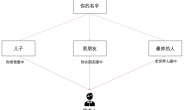文章目录
- Step 1 建立基本的sdf模型
-
- 1、创建新的.world文件
- 2、添加地面和光线
- 3、添加基础部件
- Step2 添加惯性
-
- 1、查看当前的惯性值。
- 2、添加惯性信息
- Step3 添加关节(joint)
-
- 1、定义关节
- 2、检验效果
- Step4 添加传感器
-
- 1、添加传感器到顶部link
- 2、设置传感器
- 3、开始仿真看下效果
- 下一篇
本教程基于ubuntu系统
创建新模型时的第一步是收集相关模型信息。Velodyne LiDAR公司已在其网站上提供了有关其传感器的文档 。如果没有有关模型的详细信息,则可以测量物理版本,向制造商询问规格,或者在最坏的情况下进行猜测。 根据Velodyne文档,我们将创建具有以下功能的传感器:
- 基础圆柱体和顶部圆柱体,顶部圆柱体在能够旋转
- 创建垂直圆柱体的一组定向激光。
Step 1 建立基本的sdf模型
1、创建新的.world文件
gedit velodyne.world
界面如下,大家也可以选择自己习惯的文本编辑器,这里只是示范。

2、添加地面和光线
<?xml version="1.0" ?>
<sdf version="1.5">
<world name="default">
<!-- A global light source -->
<include>
<uri>model://sun</uri>
</include>
<!-- A ground plane -->
<include>
<uri>model://ground_plane</uri>
</include>
</world>
</sdf>
3、添加基础部件
接下来,我们将Velodyne LiDAR的基础部分添加到SDF world文件中。我们将使用Velodyne传感器尺寸来构造基础圆柱体和顶部圆柱体。下面是Velodyne 2D绘图的屏幕截图。
 在
在<world></world>块中添加以下内容
<model name="velodyne_hdl-32">
<!-- Give the base link a unique name -->
<link name="base">
<!-- Offset the base by half the lenght of the cylinder -->
<pose>0 0 0.029335 0 0 0</pose>
<collision name="base_collision">
<geometry>
<cylinder>
<!-- Radius and length provided by Velodyne -->
<radius>.04267</radius>
<length>.05867</length>
</cylinder>
</geometry>
</collision>
<!-- The visual is mostly a copy of the collision -->
<visual name="base_visual">
<geometry>
<cylinder>
<radius>.04267</radius>
<length>.05867</length>
</cylinder>
</geometry>
</visual>
</link>
<!-- Give the base link a unique name -->
<link name="top">
<!-- Vertically offset the top cylinder by the length of the bottom
cylinder and half the length of this cylinder. -->
<pose>0 0 0.095455 0 0 0</pose>
<collision name="top_collision">
<geometry>
<cylinder>
<!-- Radius and length provided by Velodyne -->
<radius>0.04267</radius>
<length>0.07357</length>
</cylinder>
</geometry>
</collision>
<!-- The visual is mostly a copy of the collision -->
<visual name="top_visual">
<geometry>
<cylinder>
<radius>0.04267</radius>
<length>0.07357</length>
</cylinder>
</geometry>
</visual>
</link>
</model>
以暂停仿真的状态启动gazebo,看下模型效果,cd到文件所在路径,在命令行中输入gazebo velodyne.world -u
 默认情况下,标签定义了模型的外观。标签定义与其他模型碰撞时的表现。要查看和调试模型上的属性,右键,然后选择
默认情况下,标签定义了模型的外观。标签定义与其他模型碰撞时的表现。要查看和调试模型上的属性,右键,然后选择view→Collisions。您将看到两个圆柱体(由于靠近而看起来像一个圆柱体)。

Step2 添加惯性
我们有了一个Velodyne模型,但是该模型缺乏诸如惯性矩阵之类的动态属性。物理引擎使用惯性信息来计算模型在受力作用时的行为。如果没有或错误惯性值,模型在进行物理仿真的时候会表现得很奇怪。
1、查看当前的惯性值。
在gazebo运行的情况下,右键单击Velodyne模型,然后选择View->Inertia。然后会出现以下画面。

通常,每个紫色框应大致匹配与其关联的链接的大小。由于我们的模型缺少惯性信息,当前的惯性盒尺寸过大。
2、添加惯性信息
我们可以通过同时指定质量矩阵和惯性矩阵来向链接添加惯性。我们将Velodyne的质量设定为1.3kg,使用相关公式来计算惯性矩矩阵 。 在<link name="base">块中添加以下内容:
<model name="velodyne_hdl-32">
<link name="base">
<pose>0 0 0.029335 0 0 0</pose>
<inertial>
<mass>1.2</mass>
<inertia>
<ixx>0.001087473</ixx>
<iyy>0.001087473</iyy>
<izz>0.001092437</izz>
<ixy>0</ixy>
<ixz>0</ixz>
<iyz>0</iyz>
</inertia>
</inertial>
在<link name="top">块中添加以下内容:
<link name="top">
<pose>0 0 0.095455 0 0 0</pose>
<inertial>
<mass>0.1</mass>
<inertia>
<ixx>0.000090623</ixx>
<iyy>0.000090623</iyy>
<izz>0.000091036</izz>
<ixy>0</ixy>
<ixz>0</ixz>
<iyz>0</iyz>
</inertia>
</inertial>
设置好后,会有以下效果:

Step3 添加关节(joint)
joint定义了每个link之间的约束。在机器人领域,最常见的关节类型是revolute(旋转)。旋转关节定义了两个连杆之间的单个旋转自由度。完整的关节列表可以在SDF网站上找到。
1、定义关节
我们将定义一个顶部围绕底部旋转的关节,在前添加以下内容
<!-- Each joint must have a unique name -->
<joint type="revolute" name="joint">
<!-- Position the joint at the bottom of the top link -->
<pose>0 0 -0.036785 0 0 0</pose>
<!-- Use the base link as the parent of the joint -->
<parent>base</parent>
<!-- Use the top link as the child of the joint -->
<child>top</child>
<!-- The axis defines the joint's degree of freedom -->
<axis>
<!-- Revolve around the z-axis -->
<xyz>0 0 1</xyz>
<!-- Limit refers to the range of motion of the joint -->
<limit>
<!-- Use a very large number to indicate a continuous revolution -->
<lower>-10000000000000000</lower>
<upper>10000000000000000</upper>
</limit>
</axis>
</joint>
运行gazebo,点击模型,右键View->Joints,View->Transparent我们能看到以下效果:

2、检验效果
我们可以使用“关节命令”图形工具来验证关节是否正确旋转。拖动右侧面板在主窗口上打开,然后选择Velodyne模型。使用Force部件中的选项卡向关节施加较小的力(0.01即可)。取消暂停世界,您应该看到可视化的关节开始围绕模型的Z轴旋转。 至此,我们有了一个具有有效惯性,碰撞和关节属性的Velodyne模型。接下来,我们将添加传感器。

Step4 添加传感器
传感器用于从环境或模型生成数据。在本节中,我们将为Velodyne模型添加一个激光传感器。gazebo中的激光传感器可以发出一个或多个光束,这些光束会产生距离以及可能的强度数据。 在sdf文件中,该传感器由<scan>和<range>两个部分组成,<scan>定义波束的布局和数量,<range>限定一个单独的束的性质 <scan>中包含<horizontal>和<vertical>两个块。<horizontal>组件定义在水平平面中发出的光线,该<vertical>组件定义在垂直平面中发出的光线。 Velodyne传感器需要垂直射线,然后旋转。我们将其模拟为旋转的水平扇面。我们之所以采用这种方法,是因为在gazebo中可视化数据会更容易一些。Velodyne规格表明HDL-32具有32束光线,垂直视场在+10.67到-30.67度之间。
1、添加传感器到顶部link
在<link name="top">中添加以下内容
<!-- Add a ray sensor, and give it a name -->
<sensor type="ray" name="sensor">
<!-- Position the ray sensor based on the specification. Also rotate
it by 90 degrees around the X-axis so that the <horizontal> rays
become vertical -->
<pose>0 0 -0.004645 1.5707 0 0</pose>
<!-- Enable visualization to see the rays in the GUI -->
<visualize>true</visualize>
<!-- Set the update rate of the sensor -->
<update_rate>30</update_rate>
</sensor>
2、设置传感器
紧跟上面内容<update_rate>30</update_rate>,添加以下内容
<ray>
<!-- The scan element contains the horizontal and vertical beams.
We are leaving out the vertical beams for this tutorial. -->
<scan>
<!-- The horizontal beams -->
<horizontal>
<!-- The velodyne has 32 beams(samples) -->
<samples>32</samples>
<!-- Resolution is multiplied by samples to determine number of
simulated beams vs interpolated beams. See:
http://sdformat.org/spec?ver=1.6&elem=sensor#horizontal_resolution
-->
<resolution>1</resolution>
<!-- Minimum angle in radians -->
<min_angle>-0.53529248</min_angle>
<!-- Maximum angle in radians -->
<max_angle>0.18622663</max_angle>
</horizontal>
</scan>
<!-- Range defines characteristics of an individual beam -->
<range>
<!-- Minimum distance of the beam -->
<min>0.05</min>
<!-- Maximum distance of the beam -->
<max>70</max>
<!-- Linear resolution of the beam -->
<resolution>0.02</resolution>
</range>
</ray>
3、开始仿真看下效果





